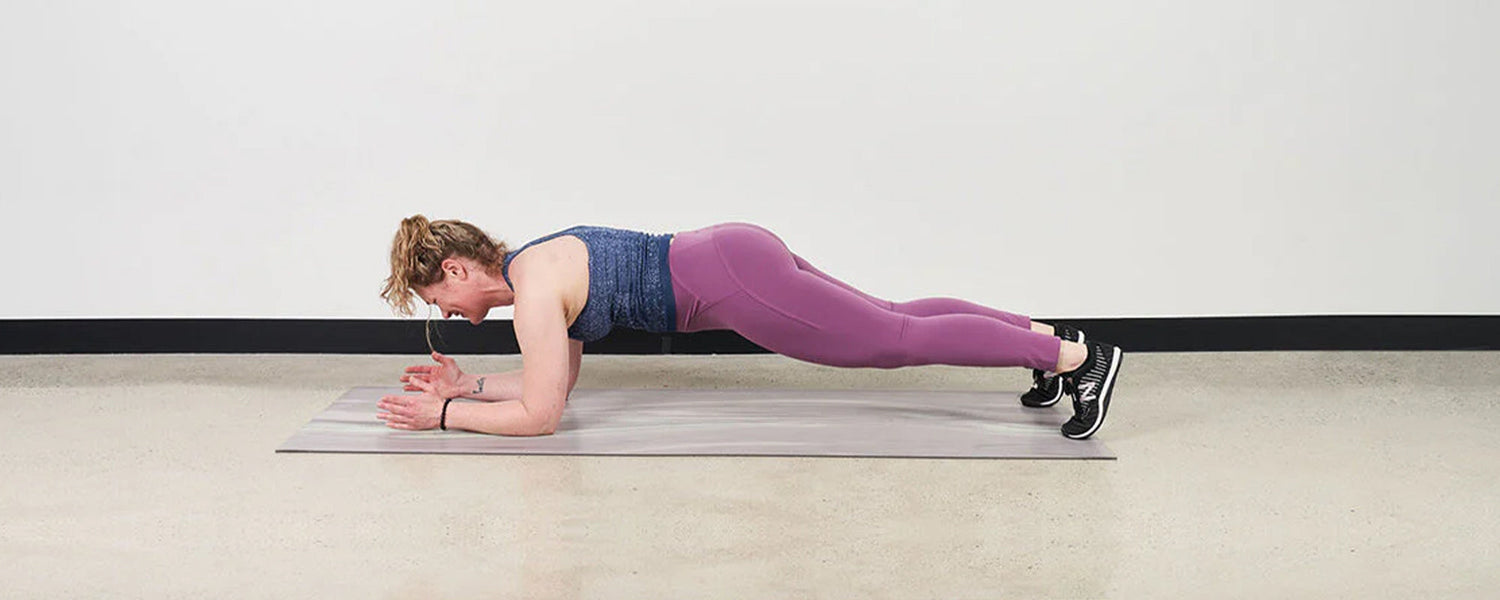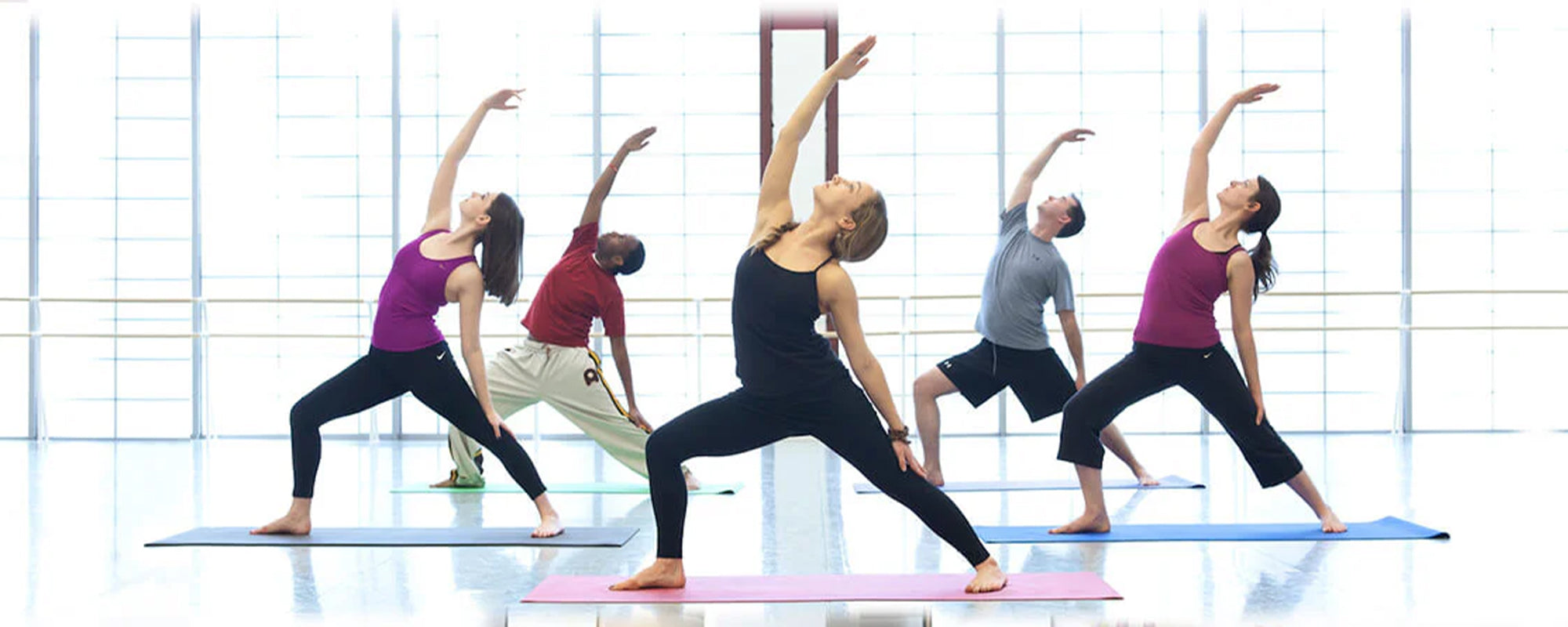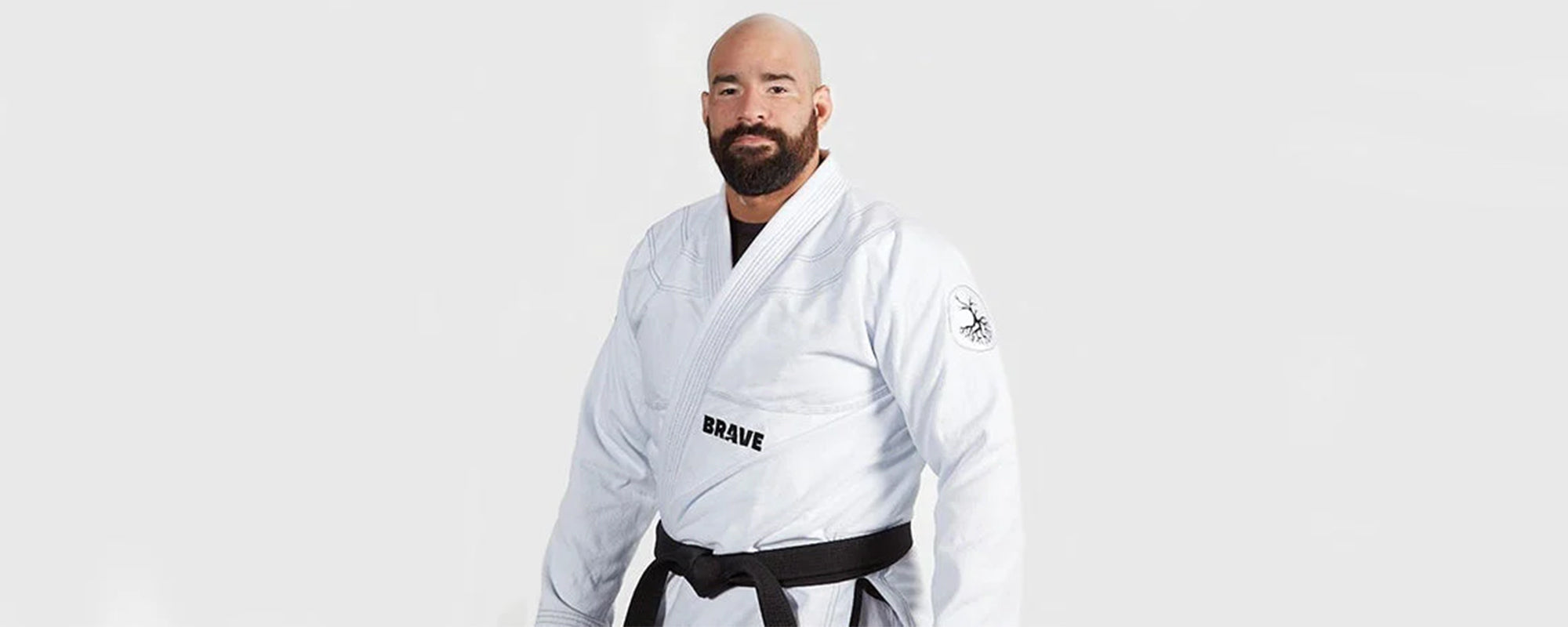Table of content
1. What are Planks?
Planking is a static bodyweight exercise in which a certain group of muscles is stimulated and strengthened. During planking, keep your trunk apart from the ground and balance your body on your toes and arms.
A strong core is the prerequisite of a good grappling body and is beneficial for all martial artists. BJJ practitioners rely on firming up their muscles because strong muscles enable them to apply techniques, execute submissions and protect them from injuries. Planking benefits core muscles, glutes, shoulders, and arms. For beginners, it can also affect leg muscles.
Regular practice of planks helps grapplers to improve their balance and stability because, for the successful initiation and execution of submission attacks, stability is one of the most crucial elements.
Planks are simple exercises but maintaining the plank position for an extended period is not a simple task. It will definitely enhance stamina and strengthen overall body mobility.
2. Plank Exercises
Plank exercises can be performed with variable postures. Different postures help BJJ fighters to build up their core and improve their stability. Here we will discuss different plank workouts for BJJ fighters.
2.1. Regular Plank
Regular planks are helpful for grapplers to brace up their core, leg, arm, and glute muscles. Strong core and leg muscles are necessary for BJJ fighters to execute many techniques and pass the guards. Glute muscles are very important to maintain balance on the mat.
Beginners should start planking with regular planks as starting various types of planks can be difficult at the start. Traditional planks are easy to perform at the start but can be complicated when performed. So start with less time span and gradually increase the time period.
Here are the steps for regular planks:
- Lay down on the floor/mat as you are about to do push-ups.
- Move your body away from the ground.
- Make sure your forearms are in contact with the ground.
- Put your weight on your toes and forearms.
- Make sure your back is straight, feet are closed, and glutes are squeezed.
- Take this position for 30 sec and gradually increase the time span.
2.2. Dolphin Planks
Dolphin Planks are a bit different from regular planks as this is not only just a static workout. This involves a dynamic workout that is beneficial for the core, lower back, and abs.
A strong core helps BJJ practitioners to absorb the opponent’s attack and stay on the mat even after indulging in an intense scuffle with their rolling partner or opponent. Back muscles help a BJJ fighter maintain his posture while abs are important to stabilize and keep balance.
Dolphin Planks are movements of the whole body while maintaining a regular plank position.
Here we will discuss the steps of Dolphin Planks:
- Keep your elbows under your shoulder in such a manner that your forearms touch the ground.
- Plant your toes on the ground and join your toes and heels.
- Move your feet in and lift your hips in the air bringing your body in a V shape.
- Only your toes touch the ground, not the lower feet.
- Now, gradually move your feet in a backward position so that your whole body should be in a straight position just like in the regular planks.
- Now repeat this workout up to 10 times.
- You can gradually increase the time according to your stamina.
2.3. Side Planks
Side planks are helpful to condition the body of BJJ practitioners and extend their limits. This workout helps to build up the core, oblique muscles ( side of the core), wrist muscles, and ankles.
Wrist and ankles are crucial in BJJ bouts for the application of many techniques and building defense against ankle or wrist lock submission attacks. Passing the guard and giving an abrupt response needs strong ankles and wrists with the power of a strong finger grip and a flexible body.
Here we will discuss the basic steps of Side Planks:
- Get on your side by putting your one hand and the side of your foot on the ground.
- Do not collapse your ankle to the ground.
- Lift the hips in a straight position, do not move your hips toward the ground.
- Put the second hand on the leg and then move your body upwards.
- You can also start by putting your forearm on the ground instead of your hand.
2.4. One-Legged Plank
One-legged Plank is a test for BJJ fighters to stabilize and balance on the ground. This workout will exert pressure on the core to increase durability and stability.
One-legged planks also help to strengthen and condition leg muscles. Strong leg muscle with more stabilizing stamina ensures great performance on the mat.
Here we will discuss the steps to perform one-legged planks:
- Put your body in the position of the regular plank.
- Lift one of your legs and balance on the other one.
- Stay in this position for 30-60 seconds for each leg.
2.5. Reverse Planks
Reverse planks also known as isometric exercises are helpful to strengthen the lower back and abdominal muscles. Stronger lower back and abdominal muscles are essential to stabilize during a BJJ bout.
This posture helps to improve rotational motions which are beneficial for grapplers to execute different techniques and swift transitions. This position also helps to enhance the flexibility of the wrist and ankles.
- Here we will discuss the basic steps for Reverse Planks:
- Lay straight on your palms, extended behind your back while facing the roof.
- You can also do it on elbows if you are a beginner.
- Keep your heels joined and on the ground.
- Lift your body trunk up and keep your body in a straight position.
- Hold this position for 30 seconds.
2.6. Plank Jacks
Plank Jacks are planking workouts combined with jumping exercises. These planks help to strengthen the core to absorb shocks and prepare you to build a stronger defense. These movements also work on the lower back and abs muscles of BJJ fighters.
Furthermore, plank jacks help grapplers with their cardio exercises. These planks are helpful to increase cardiac potential and aerobic stamina and play a key role in BJJ conditioning.
Here we will discuss the basic steps of Plank Jacks.
- Put your body weight on your forearms and toes by keeping your body straight just like in the plank position.
- Quickly move your feet apart as you can and then quickly join them again.
- Continue moving your feet in a similar manner.
- Start from 20 seconds if you are a beginner. Gradually increase the time period to 60 seconds.
2.7. Weighted Planks
Grappling bouts require a stronger core and great stamina especially to initiate the takedown and carry your opponent on your back. It will help you build a great defense against the back takes. To increase weight-lifting stamina, weighted planks are one of the best exercises. During a BJJ bout, if a fighter faced a situation in which an opponent put his weight on him, a stronger core and back-take defense will potentially help him to avoid the submission.
Furthermore weighted planks are helpful to strengthen the core, wrist, and abs.
Here we will discuss the basic steps of Weighted Plank:
- Roll with the weight on your back while in a sitting position.
- Lift the weight to your upper back with both of your hands.
- Now release one hand and put this elbow on the ground while lifting the weight with your other hand.
- Once you are in a horizontal position, release the other hand and keep another elbow on the ground.
- Now slowly move your legs behind your back in a straight position just like in regular planks.
- Your groin, glutes, and abs should be tight and lifted upward.
- Make sure you are not saggy and the weight should be on your upper back, not on the lower back.
- Once you are done, move your knees to the ground and push the weight on your side.
- Now you can safely stand up.
2.8. Side Plank Snatch
Side Plank Snatch is the mixture of both snatches and side planks. In this workout, BJJ fighters can strengthen their shoulders and arms muscles. Weightlifting while in a complicated posture helps grapplers to condition their bodies according to the needs and requirements of possible BJJ fight situations.
Side plank snatch helps grapplers to enhance their stamina while in a difficult situation and reduce their chances of submission. Just like other plank workouts, this is also effective to strengthen the core for stabilization, rotational motion, and abrupt responses.
Here we will discuss the basic steps for Side PlankSnatch.
- Keep your body in a side plank position.
- Hold a dumbbell in your free hand and lift it up and down.
- Repeat this workout with the opposite hand as well.
2.9. Side Plank Crunches
Side Plank Crunches basically improve the mid-core section of the body. These are also helpful to enhance flexibility and strength in your core muscles, wrist, ankles, arms, and legs. Side plank crunches enable BJJ fighters to remain relaxed and calm in a complicated posture and enhanced motility helps them to apply techniques while in a difficult situation.
Here we will discuss some basic steps of side plank crunches.
- Put your body in a side plank position.
- Move your free arm in the air above your head.
- Now turn your arm and upper leg in such a way that the tip of your elbow touches the tip of the knee.
- You can also modify this movement by bending your lower knee.
2.10. Straight Arm Plank With Shoulder Tap
Grapplers need to handle instability on the mat. Straight arm plank with shoulder tap helps BJJ fighters to get more stability while in a difficult position by tapping the shoulder. Shoulder tapping requires your whole body to balance on one arm which is helpful to increase your stability potential as well.
Furthermore, this position can also be affected by the shoulder and wrist joints. Putting your all body weight on one shoulder and arm will help you strengthen your shoulder muscles and wrist flexibility.
Here we will discuss the basic steps for a Straight Arm Plank with Shoulder Tap.
- Put your body in the plank position by keeping your palms on the ground and your shoulders should be straight to your hands.
- Now put all your weight on one hand and tap the shoulder with your other hand.
- Repeat this process with both hands alternatively.
2.11. Medicine Ball Planks
The medicine plank pose stabilizes and strengthens core muscles more than a traditional plank.
The upward plank pose is also practiced by BJJ competitors to strengthen their core, arms, shoulders, and chest as well.
But the fantastic thing about this tank is that it also helps BJJ fighters to maintain balance. Balancing your whole weight on a medicine ball is something different than traditional planks.
Here we will discuss the basic steps of medicine ball plank:
- Put your both hands on the medicine ball.
- Push your both legs and balance on the toes like regular planks.
- Now keep this position for 30-60 seconds.
3. Takeaways
BJJ is one of the most physically demanding grappling martial arts and makes use of strong muscles, especially core muscles. It also involves enhanced stamina and impeccable balance. Planks help BJJ practitioners to meet all these requirements. A planking workout is very much effective to get strong muscles without any equipment or complicated tool.
Photo Credit: @runnersworld













Leave a comment
This site is protected by hCaptcha and the hCaptcha Privacy Policy and Terms of Service apply.